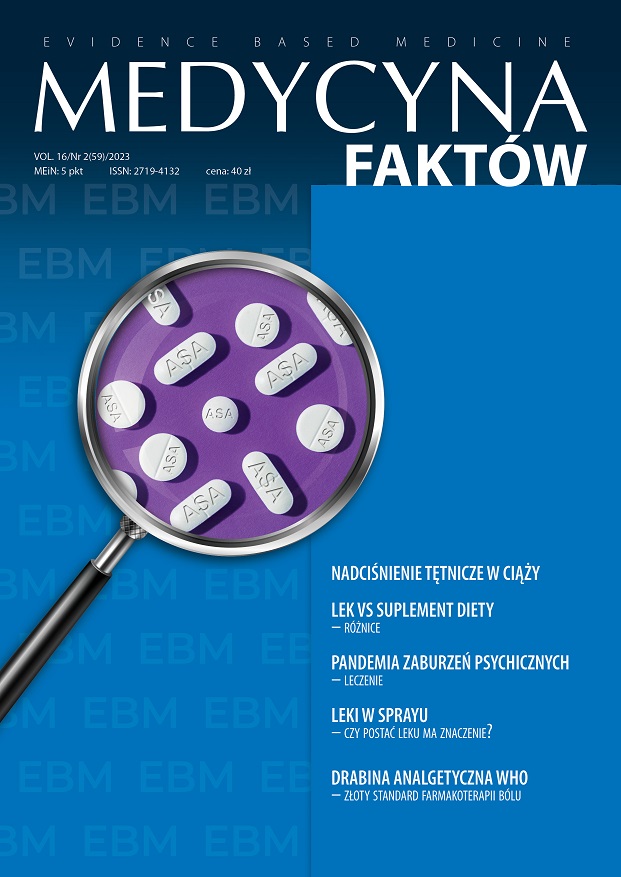The use of vinpocetine in dizziness in a patient with multi-morbidity. A case report Case report
Main Article Content
Abstract
Dizziness is frequently found complaint in elderly which negatively impact their lives. This is an important problem in population with multi-morbidity and polypharmacy. Dizziness impairs independent functionality. It can cause falls leading to bones fractures and head traumas. Patient complaining dizziness needs detailed and multidirectional diagnostic management. Dizziness is subjective and uncharacteristic, so diagnostic procedures allow to exclude potentially life-threatening or curable causes. Choice of treatment should consider probable etiology and interactions with co-existent diseases and with other applied medications. Vinpocetine used as monotherapy or combined treatment is reasonable therapeutic options for elderly with dizziness and multi-morbidity.
Article Details
Copyright © by Medical Education. All rights reserved.
References
2. Wojtczak R, Narożny W, Kuczkowski J et al. Epidemiology of dizziness in northern Poland – The first Polish neurootologic survey of the general population. Ann Agric Environ Med. 2017; 24(3): 502-6. http://doi.org/10.5604/12321966.1228401.
3. Prusiński A. Klasyfikacja, obraz kliniczny i leczenie zawrotów głowy. Polski Przegląd Neurologiczny. 2011; 7(1).
4. Charakterystyka produktu leczniczego (access: 11.07.2023).
5. Karatas M. Central vertigo and dizziness: epidemiology, differential diagnosis, and common causes. Neurologist. 2008; 14(6): 355-64. http://doi.org/10.1097/NRL.0b013e31817533a3.
6. Zhou D, Meng R, Li SJ et al. Advances in chronic cerebral circulation insufficiency. CNS Neurosci Ther. 2018; 24(1): 5-17. http://doi.org/10.1111/cns.12780.
7. Nagata K, Yamazaki T, Takano D et al. Cerebral circulation in aging. Ageing Res Rev. 2016; 30: 49-60. http://doi.org/10.1016/j.arr.2016.06.001.
8. Saniasiaya J, Kulasegarah J. Dizziness and COVID-19. Ear Nose Throat J. 2021; 100(1): 29-30. http://doi.org/10.1177/0145561320959573.
9. Berkowicz T, Domitrz I, Kalinowska-Łyszczarz A et al. Rekomendacje postępowania w zawrotach głowy w praktyce ambulatoryjnej. Neurologia Praktyczna. 2013; 5(74): 8-16.
10. Kondo M, Kiyomizu K, Goto F et al. Analysis of vestibular-balance symptoms according to symptom duration: dimensionality of the Vertigo Symptom Scale-short form. Health Qual Life Outcomes. 2015; 13: 4. http://doi.org/10.1186/s12955-015-0207-7.
11. Ratajczak A, Sobczyk K, Budnicki D et al. Przegląd wybranych kwestionariuszy stosowanych do oceny zawrotów głowy i zaburzeń równowagi. Now Audiofonol. 2019; 8(1): 60-71. http://doi.org/10.17431/1003265.
12. Patyar S, Prakash A, Modi M et al. Role of vinpocetine in cerebrovascular diseases. Pharmacol Rep. 2011; 63(3): 618-28. http://doi.org/10.1016/s1734-1140(11)70574-6.
13. Zhang YS, Li JD, Yan C. An update on vinpocetine: New discoveries and clinical implications. Eur J Pharmacol. 2018; 819: 30-4. http://doi.org/10.1016/j.ejphar.2017.11.041.
14. Malík M, Tlustoš P. Nootropics as Cognitive Enhancers: Types, Dosage and Side Effects of Smart Drugs. Nutrients. 2022; 14(16): 3367. http://doi.org/10.3390/nu14163367.
15. Bönöczk P, Gulyás B, Adam-Vizi V et al. Role of sodium channel inhibition in neuroprotection: effect of vinpocetine. Brain Res Bull. 2000; 53(3): 245-54. http://doi.org/10.1016/s0361-9230(00)00354-3.

